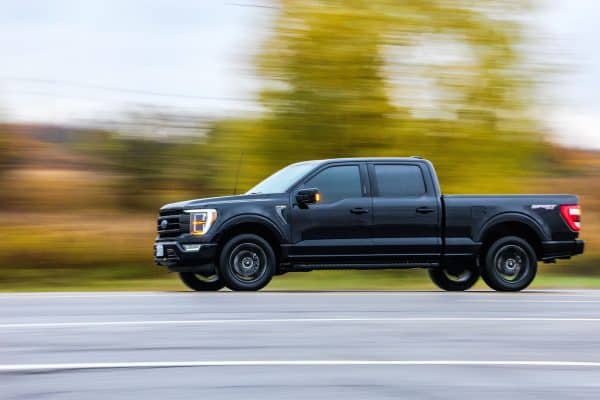The Ford F-150 has one of the highest towing capacities among all full-size pickup trucks available in the U.S. Of course, the F-150 needs to have a suitably-rated hitch in order to achieve its maximum trailering potential. If you're wondering about the size of the F-150's hitch receiver, then you've come to the right place. We've done the research for your convenience.
For the thirteenth generation of the F-150 (model year 2015 to 2020), Ford maintained a standard hitch receiver size of 2 inches (2" x 2"). This receiver size is the same for the F-150's class III and class IV hitch receiver assemblies.
Would you like to know more about the Ford F-150's hitch receivers, hitches, and towing capacities? Do read on, because we've prepared some informative tidbits for you to enjoy your truck's trailering potential.
![Photo of a blue Ford Raptor F150 pick up truck - Ford F-150 Hitch Receiver Size - What Is It [2014-2022]](https://veasks.com/wp-content/uploads/2022/09/Photo-of-a-blue-Ford-Raptor-F150-pick-up-truck-Ford-F-150-Hitch-Receiver-Size-What-Is-It-2014-2022-1200x800.png)
What Size Is F150 Hitch Receiver?
Like most full-size trucks and SUVs, the Ford F-150 uses a 2-inch hitch receiver size for both its class III and class IV hitch receiver assemblies. This receiver size accepts many standard 2-inch shanks, including many ball mounts, pintle hitches, weight-distributing hitches, and other towing and cargo accessories.
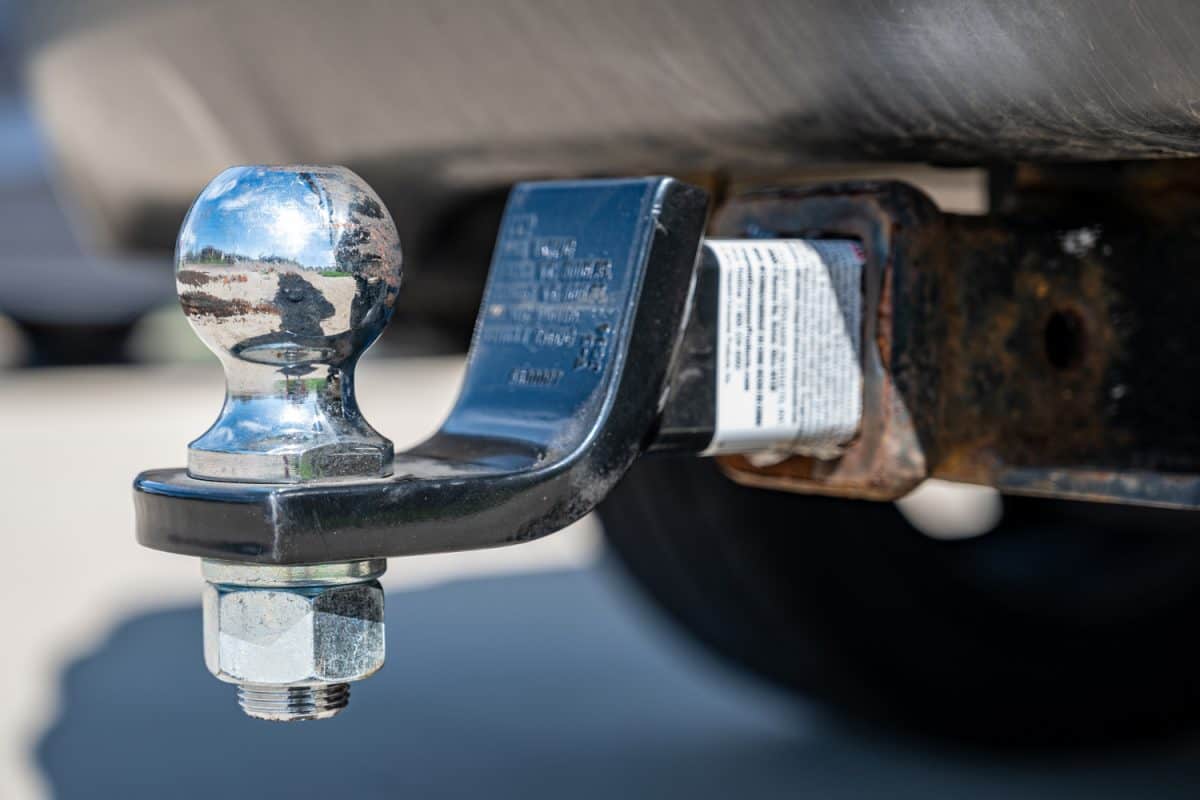
What Class Of Hitch Is Standard On An F150?
Because many American buyers expect their trucks to do some towing, Ford outfitted all of the current trims of the F-150 with a hitch receiver. Lower trims come standard with a class III receiver, with the option of upgrading to a class IV receiver assembly. In turn, many higher trims like the F-150 Raptor come standard with a class IV receiver.
How Much Weight Can A Class 3 Receiver Hitch Pull?
As we can probably infer from the presence of "classes", not all hitch receivers are made the same. Hitch receivers range from class 1 to class 5, and their towing capacities increase as the class number rises. However, not all receivers of the same class have the same capacities.
To illustrate how much weight each receiver class can theoretically pull, we've prepared a list below.
Class I Receiver
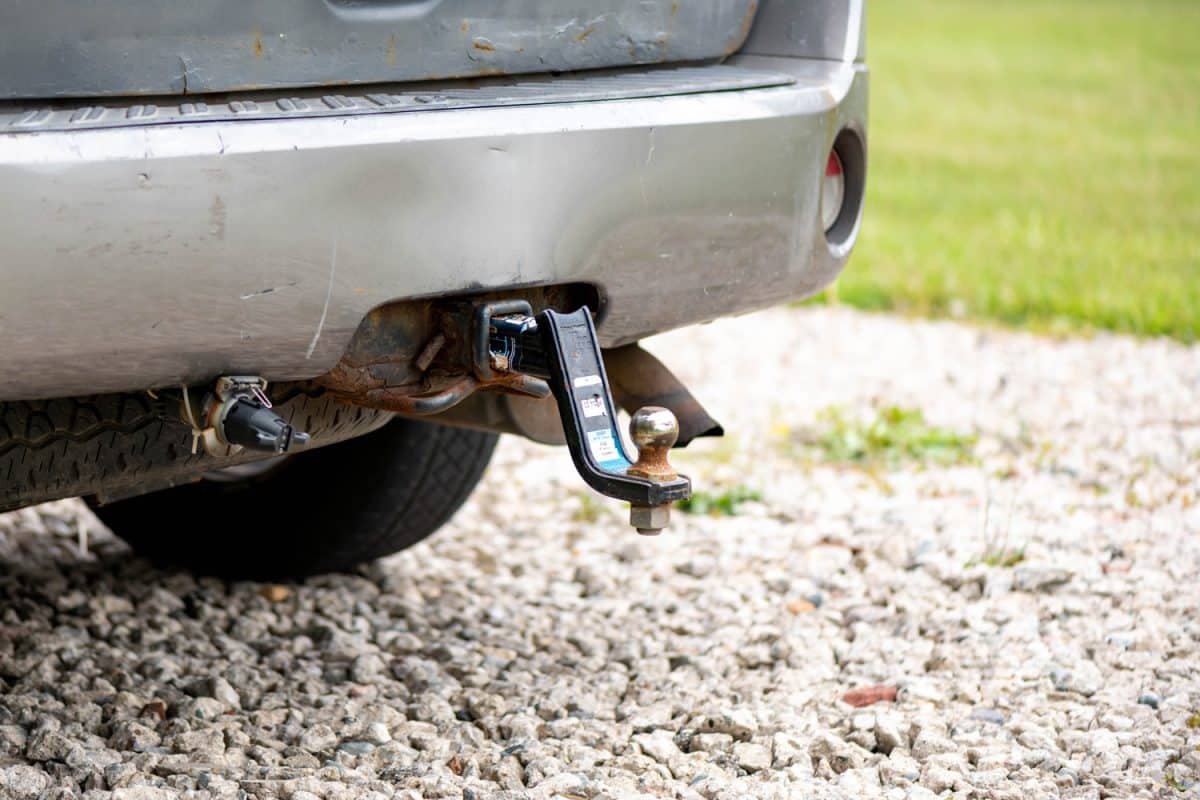
Class I hitch receivers have the lowest towing capacity among all receiver classes, and they are usually used for passenger cars and small crossovers. All class I receivers have a 1.25-inch receiver opening.
- Gross trailer weight capacity - 1,000 to 2,000 pounds
- Tongue weight capacity - 100 to 200 pounds
- Maximum weight distribution hitch capacity - not applicable
- Maximum weight distribution hitch tongue weight - not applicable
Class I hitch receivers are meant for towing the lightest trailers or pop-up campers. Moreover, there are no weight-distribution hitches that will fit class I receivers. However, you can mount some class I hitch accessories easily, like bike racks, drawbars, and cargo carriers.
Class II Receiver
Although most class II hitch receivers have a 1.25-inch receiver opening, a few of them come with a 2-inch opening. Class II receivers are usually more appropriate for larger sedans, crossovers, and minivans that have more capable engines and transmissions.
- Gross trailer weight capacity - 2,000 to 3,500 pounds
- Tongue weight capacity - 200 to 350 pounds
- Maximum weight distribution hitch capacity - not applicable
- Maximum weight distribution hitch tongue weight - not applicable
Class II hitch receivers also do not have compatible weight distribution hitches in the market. These receivers are meant for towing larger pop-up campers and even small boat trailers.
Class III Receiver
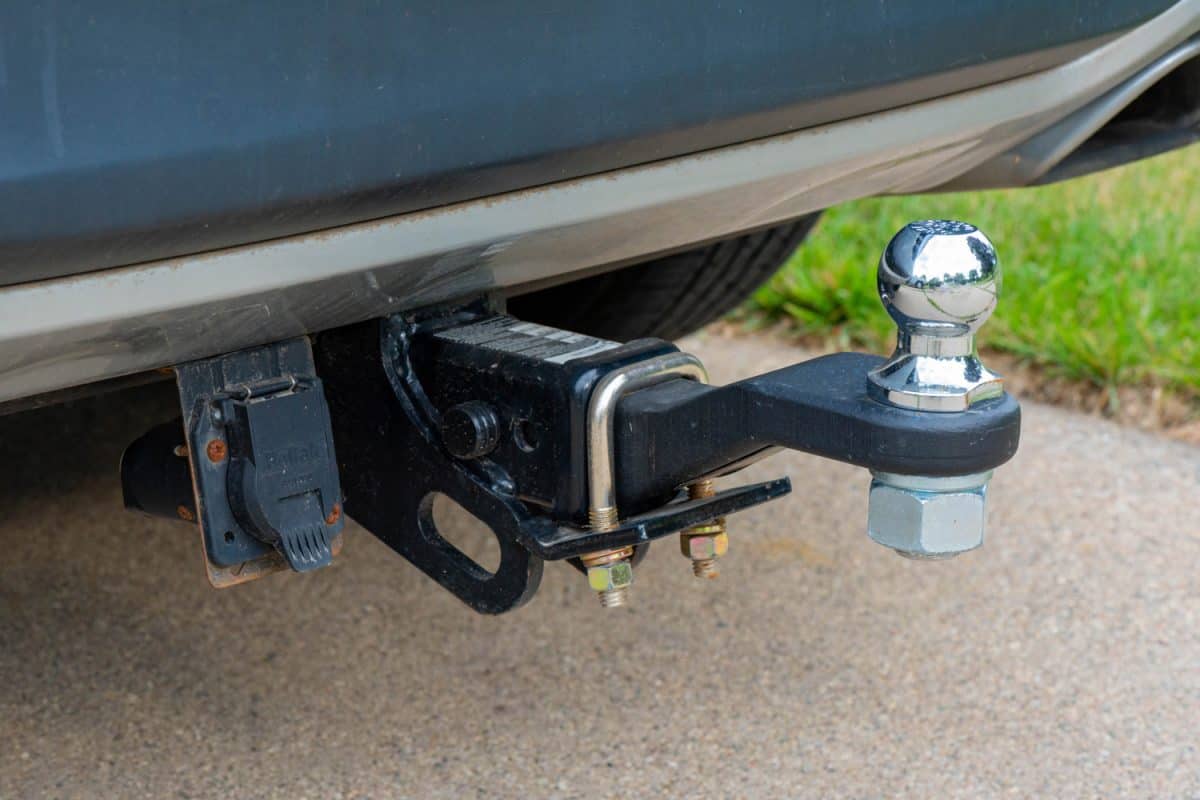
Class III receivers are some of the most common ones in the automotive industry. These receivers are usually standard equipment for lower trims of full-size trucks like the F-150, Silverado 1500, RAM 1500, Sierra 1500, and the Tundra. Most Class III hitch receivers have a 2-inch receiver opening.
- Gross trailer weight capacity, weight carrying hitch - 3,500 to 8,000 pounds
- Tongue weight capacity, weight carrying hitch - 350 to 800 pounds
- Maximum weight distribution hitch capacity - Up to 12,000 pounds
- Maximum weight distribution hitch tongue weight - Up to 1,200 pounds
The 2015 to 2020 Ford F-150's factory hitch receiver can tow up to 5,000 pounds using a regular weight-carrying hitch. Because of its high-strength low-allow (HSLA) brackets that bolt directly to the F-150's frame, this receiver can easily tow teardrop trailers, tow dollies, and utility trailers. You can also use this receiver for flat-towing another F-150 or smaller vehicles.
Class IV Receiver
Class IV receivers usually come as add-ons along with other vehicle upgrades in a full-size or half-ton truck towing packages. For the F-150, the class IV hitch receiver also has a 2-inch opening just like the class III receiver. The hitch capacity of the former, however, is much higher.
If you want to maximize the towing capacity of your F-150, then you definitely need a class IV receiver and hitch. Ford offers one such class IV receiver as an optional add-on or as part of the Trailer Tow and Max Trailer Tow Package.
- Gross trailer weight capacity, weight carrying hitch - Up to 10,000 pounds
- Tongue weight capacity, weight carrying hitch - Up to 1,000 pounds
- Maximum weight distribution hitch capacity - Up to 12,000 pounds
- Maximum weight distribution hitch tongue weight - Up to 1,200 pounds
The class IV receiver capacities are based on several hitch receivers in the market. However, Ford's latest towing guide specifically states that all hitch receivers for the F-150 trims (including the Lightning and the Raptor) can only tow a maximum of 5,000 pounds using a weight-carrying hitch.
Check out this 2017 video showing the trailer hitch receiver for the Trailer Tow package as well as the Max Trailer Tow package.
As you may have noticed in the video, both hitch receivers only allow up to 5,000 pounds of trailer weight using weight-carrying hitches. Nevertheless, using a class IV weight distribution hitch, some 2020 F-150 trims can tow up to a maximum of 13,200 pounds. Some trims of the newer models like the 2022 F-150 can even tow up to 14,000 pounds.
Class V Receiver
Class V receivers are usually reserved for three-quarter ton and 1-ton trucks like the Ford F-250, F-350, and other Ford cab-and-chassis models. Although some class V receivers have a 2-inch opening, Ford only offers an option between 2.5-inch and 3-inch receivers.
- Gross trailer weight capacity - Up to 20,000 pounds
- Tongue weight capacity - Up to 2,000 pounds
- Maximum weight distribution hitch capacity - Up to 20,000 pounds
- Maximum weight distribution hitch tongue weight - Up to 2,000 pounds
As we can see in the ratings, class V receivers have the same trailer weight capacity for both weight carrying and weight distribution hitches.
Ford's factory class V receiver, however, allows its most potent F-series models to tow more than 24,000 pounds.
What Weight Can A Ford F-150 Tow?

The Ford F-150's maximum towing capacity depends largely on the specific trim, towing package, and engine option. However, to declutter all the slight variances due to the drive configuration, cabin format, and truck bed length, we've listed the 2020 F-150's maximum towing capacity based on the engine option.
- 3.3-liter Ti-VCT V6 - 7,700 pounds
- 2.7-liter EcoBoost V6 - 9,000 pounds
- 3.5-liter EcoBoost V6 - 13,200 pounds
- 5.0-liter Ti-VCT V8 - 11,500 pounds
- 3.0-liter Turbodiesel V6 - 11,500 pounds
- 3.5-liter EcoBoost H.O. V6 - 11,000 pounds
All figures above can be achieved only with Ford's Max Trailer Tow package.
What Does The Ford F150 Trailer Tow Package Include?
Ford has two optional towing packages for the F-150: the (1) Trailer Tow package and (2) the Max Trailer Tow package.
The Trailer Tow package comes standard on the Limited trim, but it is optional on the XL, XLT, Tremor, Lariat, King Ranch, and Platinum trims. This package includes the following components:
- Class IV hitch receiver
- 7-pin trailer connector and wiring harness, including a 7-to-4 pin adapter.
- Integrated electronic trailer brake controller
- Pro Trailer backup and hitch assist
- Smart Trailer tow connector
- Tailgate LED
The Max Trailer Tow package, in turn, provides the highest towing capacity with the following components. This towing package is only available if you choose the 3.5-liter EcoBoost, the 3.5-liter PowerBoost, or the 5.0-liter V8 engine.
- Class IV trailer hitch receiver
- 3.55 ratio for electronic-lock rear axle
- 3.73 ratio for electronic-lock differential for models with additional Heavy-duty Payload package
- 4-pin connector and harness
- 7-pin connector and harness
- Pro Trailer backup assist
- Integrated electronic trailer brake controller
- Smart Trailer tow connector
- Upgraded rear bumper
How Much Does A Ford F-150 Cost Now?
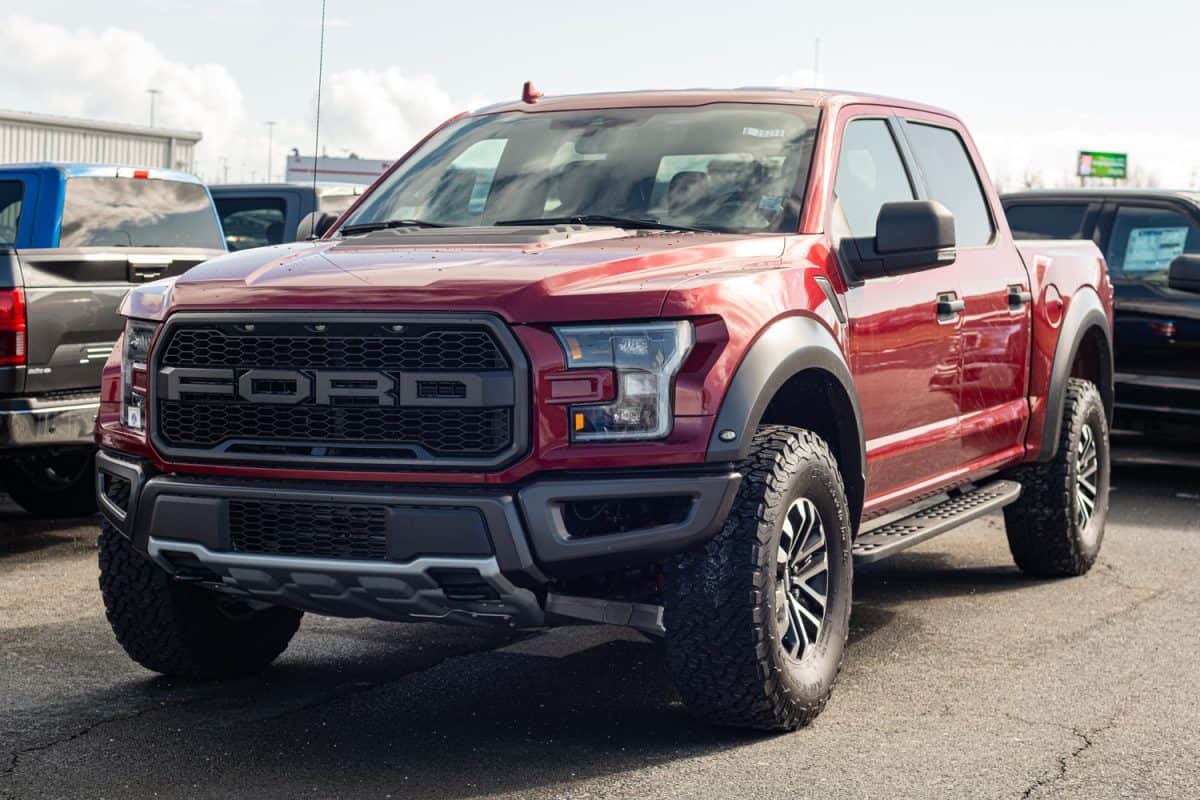
For your window shopping convenience, we've listed the starting prices of the different 2022 F-150 trims below.
- XL - $ 31,520
- XLT- $ 39,165
- Lariat- $ 49,100
- Tremor - $ 54,120
- King Ranch- $ 60,320
- Platinum- $ 63,100
- Limited- $ 77,625
- Raptor- $ 70,555
These F-150 starting prices are accurate as of September 2022.
Wrapping Up
The Ford F-150's class III and class IV receivers both have 2-inch receiver openings. This size is common for most full-size trucks and SUVs, and it also makes it easy for F-150 to use many different hitches and hitch accessories.
Thank you very much for reading. We hope we were able to help you set up your trailer and your F-150 properly for towing, especially with the hitch receiver compatibility.
For more interesting reads about towing and other automotive topics, you may also check out these great articles below.
Is My Truck Wired For Trailer Brakes?



